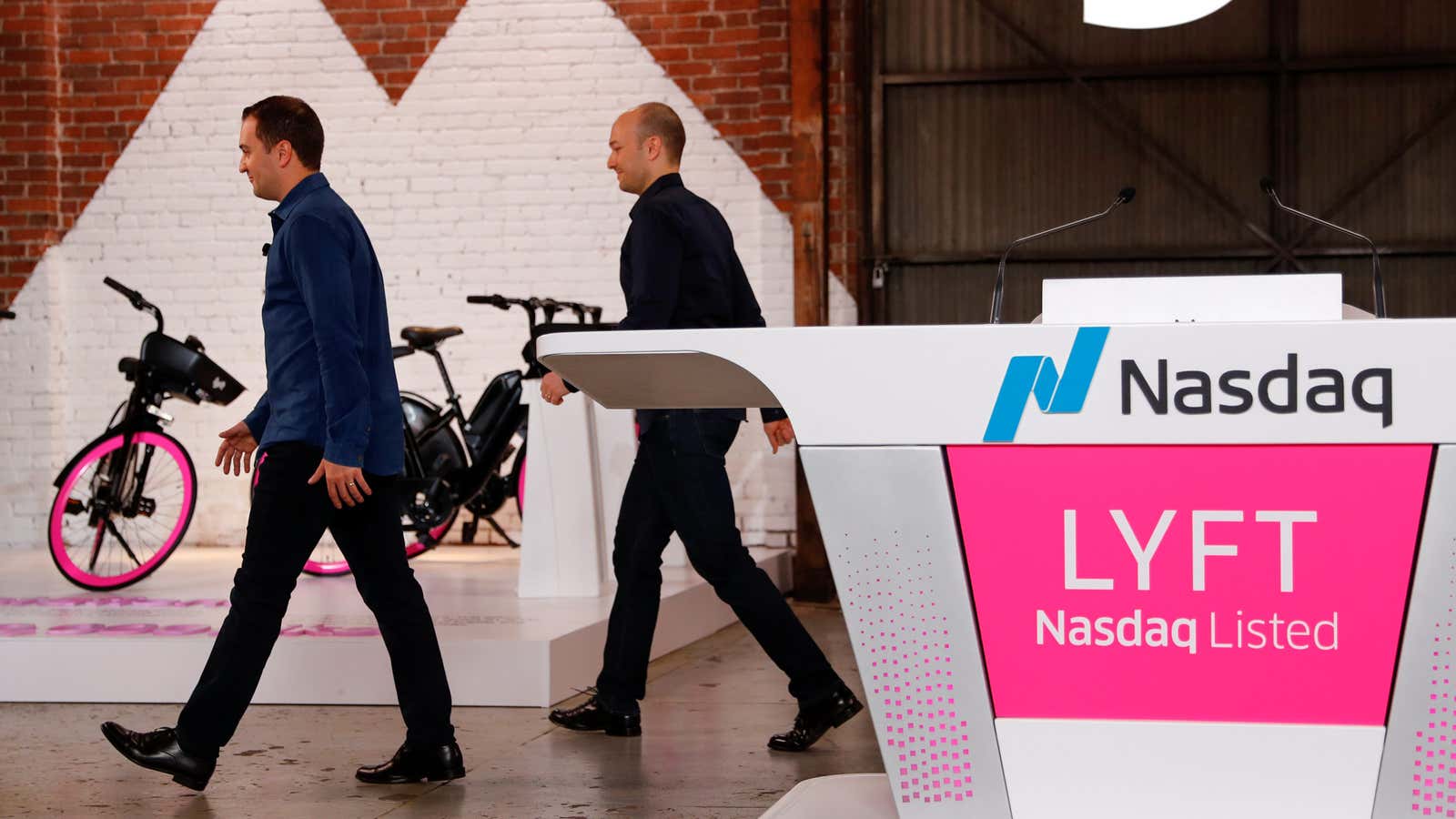Lyft Inc. is no longer a startup, but it still loses money like the best of them.
The ride-hail company lost $1.1 billion on $776 million in revenue in the first quarter of 2019, its first ever as a public company. That’s a lot of money! For reference, $1.1 billion is about 20% more than the $911 million Lyft lost in all of 2018.
But you could be forgiven for thinking Lyft’s latest quarter wasn’t so bad.
In the results it reported May 7, Lyft focused not on the $1.1 billion it lost under GAAP, or generally accepted accounting principles, but rather on an adjusted figure. Lyft attributed the bulk of its quarterly loss to $894 million in stock-based compensation and related payroll-tax expenses triggered by its March IPO. The company’s “adjusted net loss” stripped out these costs and a few other things, leaving Lyft with an adjusted net loss of $212 million in the first quarter. That’s a lot better than $1.1 billion, and also an improvement on the $228 million adjusted net loss Lyft posted in the first quarter of 2018 (when its unadjusted loss was $234 million on $397 million in revenue).
Whether Lyft should strip out these costs is a separate question. NYU Stern finance professor and valuation guru Aswath Damodaran has long critiqued this treatment of stock-based compensation, arguing that such compensation is how companies pay and retain employees they otherwise couldn’t afford. Here is Damodaran discussing a similar move by Twitter in 2014:
Attempting to give Twitter the benefit of the doubt, the rationale for adding back the expense to get to adjusted EBITDA is that it a non-cash expense (though I will take issue with that claim later in this post), but that cannot be the rationale for adding it back to get to net profit, since net profit is an accounting earnings number, not a cash flow. One possible explanation that can be offered (and it is a real stretch) is that Twitter views stock-based compensation as an extraordinary expense that will not recur in future years and that the adjusted net income should therefore be viewed as a measure of continuing income. I will believe this explanation, if I see Twitter stop using stock-based compensation, but I don’t see how they can afford to. They have a lot of employees, some of whom are highly paid, and they cannot afford to pay them cash.
In its earnings report, Lyft also chose to withhold gross bookings, a measure of the total dollar value of sales made through its platform. Ride-hail companies like Uber and Lyft pay out the bulk of bookings (fares) to drivers as earnings. Figuring out how to increase the share of the fare the company keeps—called the “take rate”—while still paying enough to make the gig worthwhile for drivers is a key challenge for these companies, and one that will help determine whether they can ever become profitable.
Lyft had highlighted gross bookings in its IPO filing and in particular its take rate, which grew steadily throughout 2017 and 2018. For the company to suddenly stop sharing those figures in its first quarterly earnings report was a surprise.
Asked about the omission by an analyst on the investor call, Lyft chief financial officer Brian Roberts said the company didn’t report bookings or take rate to “avoid investor confusion.” Lyft is “aggressively investing” in new businesses like bikes and scooters where the full amount paid by the customer gets booked as revenue, Roberts said, making revenue a more useful metric. “This is absolutely a positive metric for us in the first quarter,” he added. “Revenue as a percentage of bookings increased in the first quarter on both a year-over-year and quarter-over-quarter basis.”
Asked to discuss Lyft’s path to profitability, which remains tremendously unclear, Roberts again cited adjusted figures, while pointedly ignoring the $1.1 billion loss based on standard accounting practices. “We have teams across the company dedicated to initiatives that will help us grow more profitably in the core ridesharing business by both bending cost curves and increasing the efficiency of growth levers,” he said, a perfectly vague answer fit for an executive of a public company.
